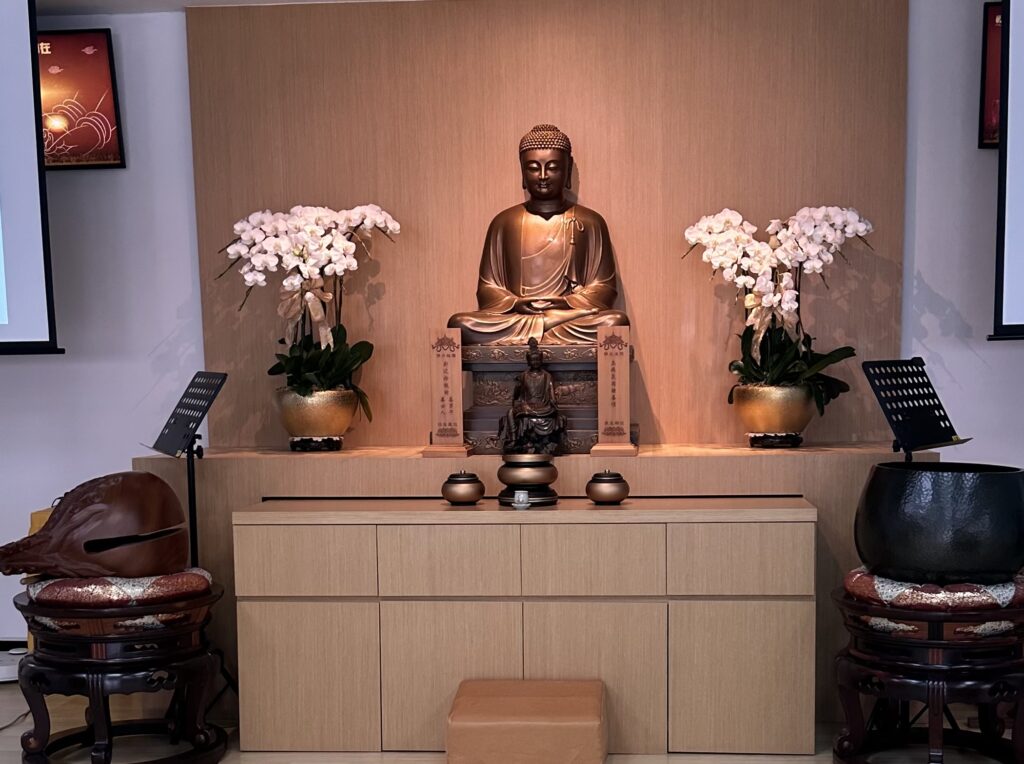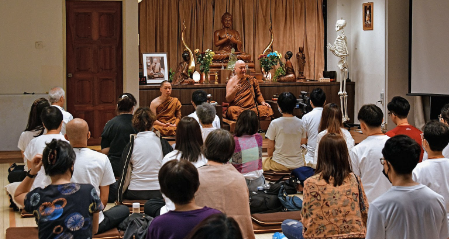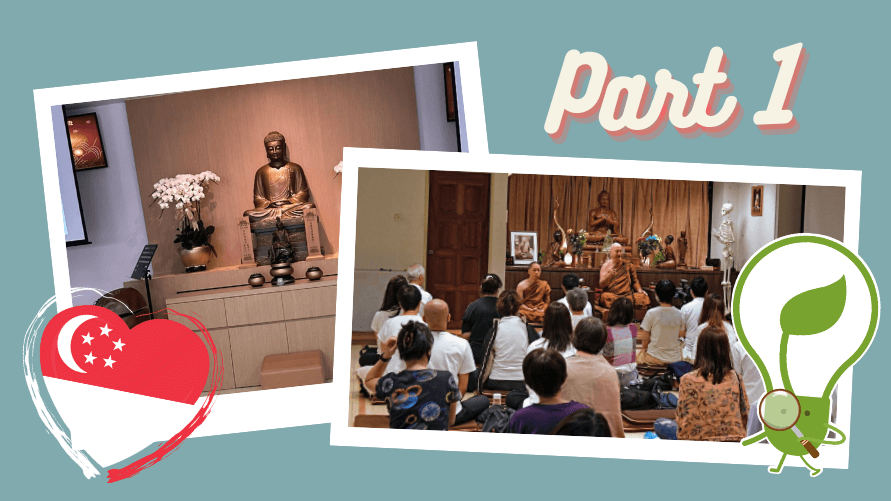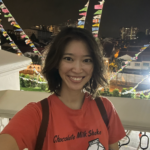Editor’s note: Special thanks to Jom, an independent journal website that has allowed us to republish this article. The original piece can be found here. This article has been further edited to follow HOL’s standards.
TLDR: Marissa explores Paya Lebar & Geylang’s hidden gems where peace is often hidden amongst these bustling areas of Singapore.
1. Paya Lebar
The story of how my mind changed begins in 2021. Almost 30, I was bummed to still be living with my parents but too prudent to rent a room of my own. I was anxious to make meaning out of my life, but unsure who I wanted to be except in relation to someone else. I had fixed ideas about love, duty and reasonable behaviour, which were frequently deflated.
It was the middle of the pandemic, when many were most vulnerable to the blues, and I was open to mellow pursuits that could help time go by more quickly. One day, recalling an earlier conversation I’d had with a friend, I asked her where I could go for free group meditation classes. Just like that, I fell into a routine.
There was nothing obviously special about the place, but I found that I liked being around women who speak softly and smile with crinkles lining their eyes.

At the end of my second class, I was wiping down someone’s mat when a lady leaned in gently and smiled: “Thank you.” She took me by surprise; it felt like evening sunshine after a long day indoors.
It made me realise how fulfilling it can be to just slow down once in a while to make an offering to others of one’s warmth and serenity. To put them at ease. So I followed the sign.
As part of the routine at Dharma Drum, we would also dedicate our practice. My Mandarin was never any good, so I just mouthed the words they flashed on the screen without knowing what they meant. I later discovered that I had been vowing to help all sentient beings attain enlightenment (“众生无边誓愿度”).
How to keep this promise? I panicked. Then I relaxed. A key teaching in Buddhism is that all birth is rebirth. We have been and will be here for longer than we know. I have all the time in the world to keep my vows. But I was also curious to know more about this different way of moving through time.
2. Geylang
Chinese New Year, 2022. I was restless for an excursion. I’d recently heard of the Buddhist Library, situated in a Geylang shophouse. Being alone inside the walls of books made me feel spacious and at home.
Although Geylang tends to evoke vice and not virtue, more religious communities are clustered there than anywhere else in Singapore. This is partly by design. In 1992, some 50 hectares of the neighbourhood were rezoned so that clan associations, political parties and other civic and cultural groups could benefit from the lower rents.
Vegetarian joints and Buddhist general merchandise stores flourished alongside each other. Many know Geylang as a garden of earthly delights. Few know it’s also Singapore’s enlightenment hub.
As the days of the new year passed, I kept going back to the Buddhist Library for my dose of old world wisdom. Travellers’ tales of India and Tibet, essays by Chinese and Japanese Zen practitioners, biographies of Thai forest monks, and rare gems like Ian Stevenson’s meticulous case reports of children who can remember their past lives.
All three major Buddhist traditions—Theravāda, Mahāyāna and Vajrayāna—coexist on the shelves of the library and in the streets outside. (Some 31 percent of Singaporeans identify as Buddhist, a plurality; and over 18 percent as Christian, the next biggest group.) Each recognises the same truths about the harmful nature of the worldly life. Where they differ is in the practice of various paths to liberation.
The Theravāda path, the “way of the elders”, is the oldest of the three. It is focused on the teachings of the historical Buddha in India, and has spread southeast to thrive in Thailand, Sri Lanka and Myanmar.
Mahāyāna, the “great vehicle”, is the path followed by the majority of Buddhists in East Asia and Singapore. They recognise a larger pantheon of Buddhas and Bodhisattvas who can be called on for support. Tibetan Buddhism is a form of Vajrayāna, the “diamond vehicle”, which evolved from Mahāyāna and absorbed practices from ancient Indian tantric texts.

Two streets east of the Buddhist Library is a building where visiting monks are often invited to give public talks. One evening, at the end of the Hungry Ghost Festival, a Buddhist abbot was no more than 10 minutes into his discourse on mindfulness when a roar rose up from three floors below.
“HUAT ah! HUAT ah! HUAT ah,” senior citizens yowled, reaching across their banquet tables and stabbing with their chopsticks.
“Everything changes,” the abbot said, pausing to observe this feature of reality. By the end of his talk, the party was in full swing. Karaoke rattled the doors of our elevator when it opened onto the first floor courtyard. A trembling old man was belting out in Hokkien: “Wa meng ti, wa meng ti…” (“I ask the heavens, I ask the heavens…”)
In the park behind, a bonfire was leaping two storeys high at least, as other folks burnt offerings to the departed inside a circle of red candles. In Buddhism, simplicity and wisdom is encouraged. Burning of “hell money”—a Chinese folk custom—is unnecessary because what is burnt here cannot materialise anywhere else. It only turns to ash.
Yet here we all were, in the riot of contrasts called Geylang—creatures of different minds crammed into one corner block by the invisible hand of the free market to act out our conditioning, side by side. Not every scene however dissolves easily in laughter. Worldly amusements are often brittle, like the pair of caged toucans in the beer garden of Happy Seafood Village where the house special is a flaming volcano chicken.
The world is a hot mess. But we already knew that. Buddhist practice is about relating to your environment skilfully, without getting caught up in notions of right and wrong. Without losing balance. Did you know that perfectly enlightened beings cannot feel anger? A thought occurred to me as I left the Buddhist Library one night—even if I go nowhere in my meditation, I must try to be the place where ill will ends.
The journey continues in Part II publishing this friday.


